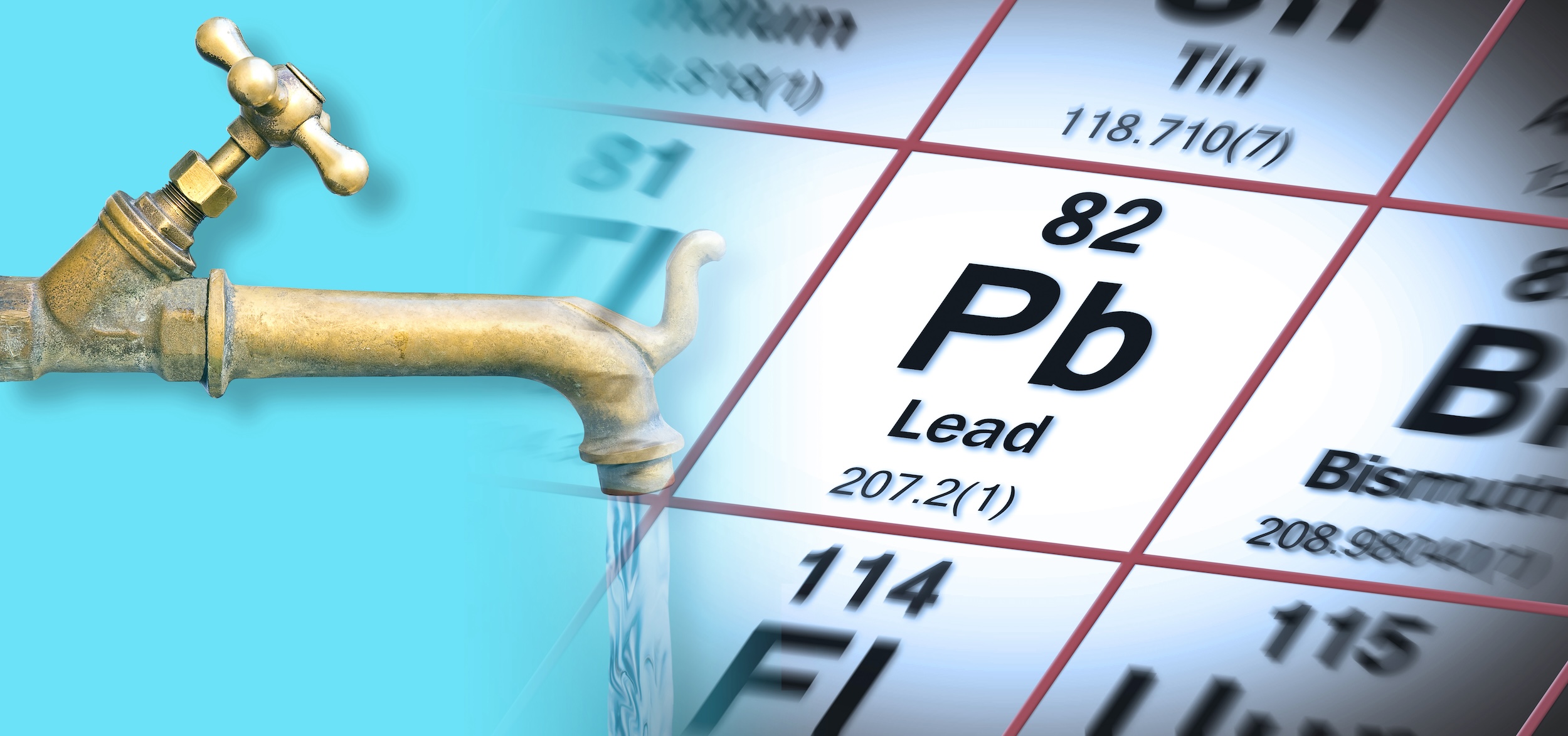General Information about Lead in Drinking Water
How Lead Gets into Drinking Water
Lead can enter drinking water when service pipes that contain lead corrode, especially where the water has high acidity or low mineral content that corrodes pipes and fixtures. The most common problem is with brass or chrome-plated brass faucets and fixtures with lead solder, from which significant amounts of lead can enter into the water, especially hot water.
Homes built before 1986 are more likely to have lead pipes, fixtures and solder. The Safe Drinking Water Act (SDWA) has reduced the maximum allowable lead content — that is, content that is considered “lead-free” — to be a weighted average of 0.25 percent calculated across the wetted surfaces of pipes, pipe fittings, plumbing fittings, and fixtures and 0.2 percent for solder and flux.
- Learn more about the maximum allowable content of lead in pipes, solder, fittings and fixtures
- Learn more about EPA’s regulations to prevent lead in drinking water
- Learn how to identify lead-free certification marks on drinking water system and plumbing products (PDF)
Corrosion is a dissolving or wearing away of metal caused by a chemical reaction between water and your plumbing. A number of factors are involved in the extent to which lead enters the water, including:
- the chemistry of the water (acidity and alkalinity) and the types and amounts of minerals in the water,
- the amount of lead it comes into contact with,
- the temperature of the water,
- the amount of wear in the pipes,
- how long the water stays in pipes, and
- the presence of protective scales or coatings inside the plumbing materials.
To address corrosion of lead and copper into drinking water, EPA issued the Lead and Copper Rule (LCR) under the authority of the SDWA. One requirement of the LCR is corrosion control treatment to prevent lead and copper from contaminating drinking water. Corrosion control treatment means utilities must make drinking water less corrosive to the materials it comes into contact with on its way to consumers’ taps. Learn more about EPA’s regulations to prevent lead in drinking water.
*Health Effects of Exposures to Lead in Drinking Water
*The health effects information on this page is not intended to catalog all possible health effects for lead. Rather, it is intended to let you know about the most significant and probable health effects associated with lead in drinking water.
Is there a safe level of lead in drinking water?
The Safe Drinking Water Act requires EPA to determine the level of contaminants in drinking water at which no adverse health effects are likely to occur with an adequate margin of safety. These non-enforceable health goals, based solely on possible health risks, are called maximum contaminant level goals (MCLGs). EPA has set the maximum contaminant level goal for lead in drinking water at zero because lead is a toxic metal that can be harmful to human health even at low exposure levels. Lead is persistent, and it can bioaccumulate in the body over time.
Young children, infants, and fetuses are particularly vulnerable to lead because the physical and behavioral effects of lead occur at lower exposure levels in children than in adults. A dose of lead that would have little effect on an adult can have a significant effect on a child. In children, low levels of exposure have been linked to damage to the central and peripheral nervous system, learning disabilities, shorter stature, impaired hearing, and impaired formation and function of blood cells.
The Centers for Disease Control and Prevention (CDC) recommends that public health actions be initiated when the level of lead in a child’s blood is 5 micrograms per deciliter (µg/dL) or more.
It is important to recognize all the ways a child can be exposed to lead. Children are exposed to lead in paint, dust, soil, air, and food, as well as drinking water. If the level of lead in a child’s blood is at or above the CDC action level of 5 micrograms per deciliter, it may be due to lead exposures from a combination of sources. EPA estimates that drinking water can make up 20 percent or more of a person’s total exposure to lead. Infants who consume mostly mixed formula can receive 40 percent to 60 percent of their exposure to lead from drinking water.
Children
Even low levels of lead in the blood of children can result in:
- Behavior and learning problems
- Lower IQ and hyperactivity
- Slowed growth
- Hearing problems
- Anemia
In rare cases, ingestion of lead can cause seizures, coma and even death.
Pregnant Women
Lead can accumulate in our bodies over time, where it is stored in bones along with calcium. During pregnancy, lead is released from bones as maternal calcium and is used to help form the bones of the fetus. This is particularly true if a woman does not have enough dietary calcium. Lead can also cross the placental barrier exposing the fetus to lead. This can result in serious effects to the mother and her developing fetus, including:
- Reduced growth of the fetus
- Premature birth
Find out more about lead’s effects on pregnancy:
- Lead and Your Baby (March of Dimes) EXIT
- Effects of Workplace Hazards on Female Reproductive Health (National Institute for Occupational Safety and Health)
Lead can also be transmitted through breast milk. Read more on lead exposure in pregnancy and lactating women (PDF) (302 pp, 4.3 MB, About PDF) .
Adults
Lead is also harmful to adults. Adults exposed to lead can suffer from:
- Cardiovascular effects, increased blood pressure and incidence of hypertension
- Decreased kidney function
- Reproductive problems (in both men and women)
Related Information
Can I shower in lead-contaminated water?
Yes. Bathing and showering should be safe for you and your children, even if the water contains lead over EPA’s action level. Human skin does not absorb lead in water.
This information applies to most situations and to a large majority of the population, but individual circumstances may vary. Some situations, such as cases involving highly corrosive water, may require additional recommendations or more stringent actions. Your local water authority is always your first source for testing and identifying lead contamination in your tap water. Many public water authorities have websites that include data on drinking water quality, including results of lead testing.
Links to such data can be found on the EPA Consumer Confidence Report website.
For more information, see CDC’s “Sources of Lead: Water” Web page.







